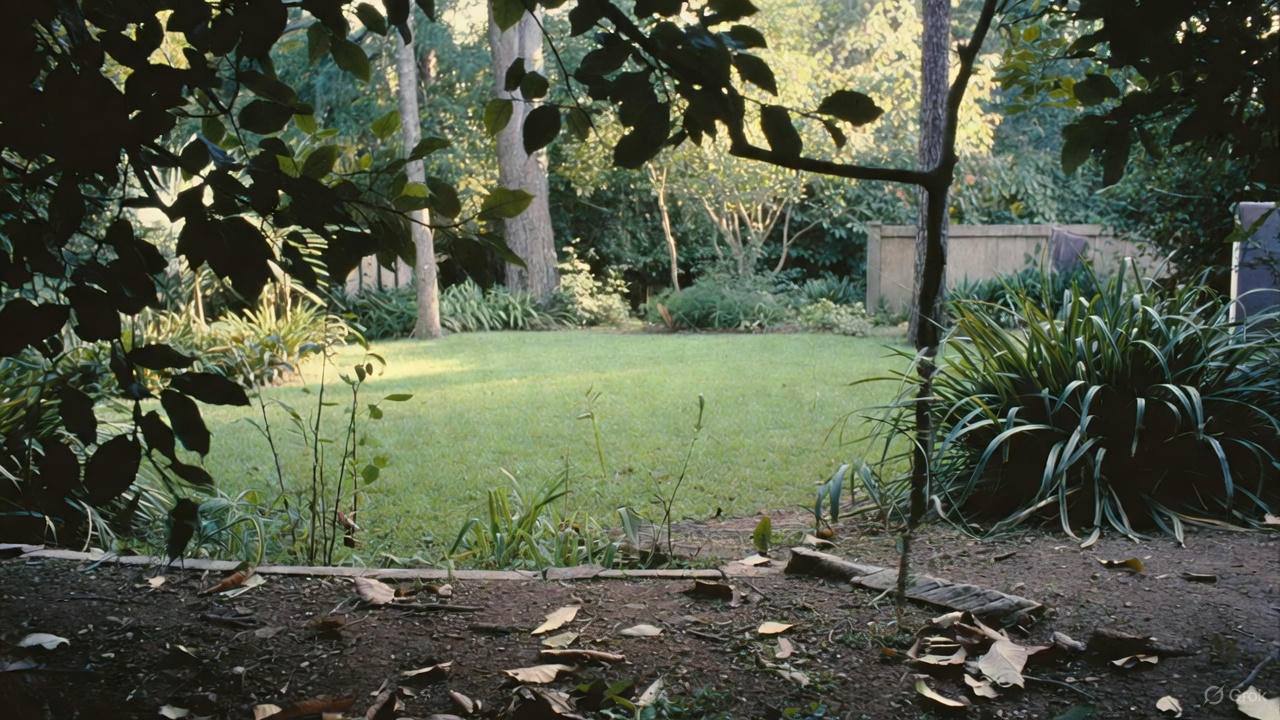How to Get Rid of Ticks in Yard?
Summer evenings in the backyard should mean barefoot walks through grass, kids playing without worry, and pets running free. Instead, many homeowners find themselves trapped indoors, afraid of the tiny bloodsuckers lurking in their lawn. Ticks have become a serious problem across America, and your yard might be harboring more of them than you realize.
These parasites don’t just cause itchy bites. They spread dangerous diseases like Lyme disease, Rocky Mountain spotted fever, and ehrlichiosis. The good news? You can take back your yard. This guide walks you through proven methods to eliminate ticks and keep them from coming back.
Why Ticks Love Your Yard
Ticks need three things to survive: moisture, shade, and hosts to feed on. Your backyard probably offers all three. The problem starts at the edges of your property, where your manicured lawn meets wild areas. Ticks hitch rides on deer, rodents, and other animals that pass through these border zones.
Tall grass provides perfect hiding spots. Leaf piles create moist environments where ticks thrive. Woodpiles and stone walls give them shelter during harsh weather. Even that charming overgrown corner you’ve been meaning to clear has become a tick nursery.
The blacklegged tick (also called the deer tick) and the American dog tick are the most common species in residential areas. These pests don’t jump or fly. They wait on grass blades and low vegetation, then grab onto anything that brushes past. This behavior, called “questing,” means they’re actively hunting for their next meal.
Start With a Thorough Yard Inspection
Before you begin any treatment, walk your property and identify problem areas. Ticks concentrate in specific locations, and knowing where they hide helps you target your efforts.
Check along fence lines first. These areas often have taller grass and more debris than the rest of your lawn. Look at the edges where your grass meets wooded areas or untamed vegetation. Examine spots under decks and porches, especially if they’re damp and shaded.
Walk through your yard in the early morning when dew is still on the grass. Drag a white cloth or towel across suspected areas. Any ticks present will grab onto the fabric, showing you exactly where the infestation exists. This simple trick reveals hot spots you might otherwise miss.
Pay attention to areas where pets spend time. Dogs create paths through yards, and these trails often pass through tick-infested zones. Check around pet houses, favorite lounging spots under trees, and along regular walking routes.
Landscape Modifications That Work
Changing your yard’s landscape is the most effective long-term solution for tick control. These modifications make your property less appealing to ticks and the animals that carry them.
Mow your lawn regularly and keep grass short. Ticks can’t survive in grass shorter than three inches because they need the moisture and shade that taller grass provides. Set your mower to cut grass to two inches, and stick to a weekly mowing schedule during growing season.
Create a three-foot barrier of wood chips or gravel between your lawn and wooded areas. This dry, inhospitable zone stops ticks from migrating into your yard. The barrier also prevents leaf litter from blowing onto your lawn, removing another tick habitat.
Remove leaf litter completely. Those picturesque piles of autumn leaves are tick hotels. Rake leaves regularly and dispose of them promptly. Don’t let them accumulate under bushes or along fences. Keep the area under playground equipment clear as well.
Clear out brush and tall weeds around the house and at the edges of your property. Use a string trimmer along fence lines weekly. Cut back overgrown vegetation that touches your lawn. The more sunlight that reaches the ground, the fewer ticks you’ll have.
Stack firewood neatly in a dry location away from the house. Raise wood piles off the ground using pallets or concrete blocks. Keep the area around woodpiles clear of debris and vegetation. Store the wood at least 20 feet from your home.
Remove any old furniture, mattresses, or trash from your yard. These items create perfect tick habitats. Clean up children’s toys and lawn equipment each evening, as ticks will hide underneath anything left on the ground overnight.
Managing Wildlife to Control Tick Populations
Deer, mice, and other animals are mobile tick transportation systems. One deer can carry hundreds of ticks into your yard. Controlling wildlife access dramatically reduces tick numbers.
Install deer fencing if your budget allows. An eight-foot fence keeps deer out effectively. For smaller properties, consider motion-activated sprinklers that startle deer away. These devices work well and won’t harm any animals.
Remove plants that attract deer. Hostas, daylilies, and fruit trees are deer magnets. Replace them with deer-resistant plants like lavender, rosemary, and ornamental grasses. Check with your local garden center for plants that deer avoid in your region.
Protect bird feeders from becoming rodent feeding stations. Use baffles on poles to stop mice and chipmunks from accessing seed. Clean up spilled seed daily. Better yet, remove bird feeders entirely during peak tick season (April through September).
Secure your trash cans with tight-fitting lids. Raccoons, opossums, and other wildlife will raid garbage, and these animals all carry ticks. Keep trash cans in a garage or shed until collection day if possible.
Eliminate standing water sources. Bird baths, clogged gutters, and empty flowerpots collect water that attracts wildlife. Change bird bath water every few days. Fix any drainage issues that create puddles in your yard.

Natural Tick Control Methods
Several natural approaches help control ticks without synthetic chemicals. These methods work best when combined with landscape modifications.
Diatomaceous earth is a natural powder made from fossilized algae. It kills ticks by damaging their exoskeletons. Apply food-grade diatomaceous earth to areas where you’ve seen ticks. Focus on the perimeter of your yard, around play areas, and under decks. Reapply after rain.
Cedar oil works as a natural tick repellent. Mix cedar oil with water according to product directions and spray it around your yard’s perimeter. The smell repels ticks and kills them on contact. Repeat applications every few weeks.
Neem oil is another natural option. This plant-based oil disrupts tick development and repels them from treated areas. Mix neem oil with water and a small amount of dish soap, then spray it on vegetation where ticks hide.
Encourage tick-eating animals to visit your yard. Guinea fowl are voracious tick eaters, consuming thousands of ticks. Chickens also eat ticks enthusiastically. If local regulations allow, consider keeping a small flock. Even wild birds help control tick populations by eating them during certain life stages.
Plant tick-repelling herbs and flowers around your yard’s edges. Lavender, mint, rosemary, and chrysanthemums naturally repel ticks. While they won’t eliminate an infestation alone, these plants add another layer of protection.
Chemical Tick Control Options
Sometimes natural methods aren’t enough, especially with severe infestations. Several effective chemical treatments are available.
Permethrin-based sprays are the most common tick treatment. This synthetic insecticide kills ticks on contact and provides residual protection for several weeks. Spray permethrin on your lawn, focusing on areas where ticks concentrate. Follow label directions carefully regarding application rates and safety precautions.
Apply tick tubes around your property. These biodegradable cardboard tubes contain permethrin-treated cotton. Mice collect the cotton for nesting material, and the permethrin kills ticks feeding on the mice. Place tubes around the perimeter of your yard in early spring and again in late summer.
Granular tick control products work well for larger yards. Spread these granules using a broadcast spreader. Water the treated area lightly after application to help the product penetrate the soil and leaf litter.
Consider professional pest control services for severe infestations. Licensed technicians have access to stronger products and know exactly where to apply them for maximum effectiveness. Most companies offer seasonal treatment programs that maintain protection throughout tick season.
Tick control should happen at specific times for best results. Treat your yard in early spring (April) before ticks become active. Apply a second treatment in late spring (May or June) when nymphs are most active. These young ticks are particularly dangerous because they’re harder to spot but still transmit diseases.
Creating a Tick-Safe Zone
Designate a tick-safe area where children play and where you spend the most time outdoors. This focused approach concentrates your efforts where protection matters most.
Install a border of cedar mulch or wood chips around play areas. Make this border at least three feet wide. The dry, sunny environment created by the mulch keeps ticks away from the play zone.
Keep playground equipment in the sunniest part of your yard. Place swing sets, sandboxes, and trampolines away from wooded edges and shaded areas. Ticks avoid hot, dry, sunny locations.
Build a patio or deck for outdoor entertaining. The hard surface and elevation keep you away from tick habitats. Add potted plants instead of landscaping that touches the ground.
Set up a perimeter of gravel or paving stones around your tick-safe zone. This creates an additional barrier that ticks won’t cross. The gravel also improves drainage, reducing moisture that ticks need.
Inspect this safe zone daily during tick season. Use the white cloth dragging method weekly to confirm the area remains tick-free. If you find ticks, retreat the area immediately.
Maintaining a Tick-Free Yard
Tick control isn’t a one-time job. Regular maintenance keeps your yard protected all season long.
Mow weekly during the growing season. Edge along fences and borders every time you mow. The constant disturbance and short grass make your yard inhospitable to ticks.
Inspect your property monthly for new tick habitats. Look for leaf accumulation, new brush growth, or areas where grass has grown too tall. Address problems immediately before ticks establish themselves.
Reapply treatments according to product labels. Most chemical treatments last four to six weeks. Natural products may need more frequent application, especially after rain.
Check pets for ticks after they’ve been outside. Use a flea and tick preventative recommended by your veterinarian. Brush pets before allowing them inside, focusing on their legs, belly, and ears where ticks attach most often.
Wash outdoor clothing in hot water after yard work. Dry clothes on high heat for at least 10 minutes to kill any ticks that hitched a ride. Do this before handling the clothing extensively or bringing it into your home.
Keep a tick removal kit handy. Fine-tipped tweezers work best for removing attached ticks. Grasp the tick as close to the skin as possible and pull straight up with steady pressure. Save removed ticks in a sealed bag or jar so they can be tested if you develop symptoms.
Seasonal Tick Management
Ticks are active year-round in many regions, but their activity peaks during specific seasons. Adjust your control strategies accordingly.
Spring is when ticks emerge from winter dormancy. Apply your first treatment in early April, before ticks become active. Focus on removing any leaf litter or debris that accumulated over winter. Cut back dead vegetation and rake your lawn thoroughly.
Summer brings peak tick activity. Nymphal ticks are most active in June and July. These tiny ticks are as small as poppy seeds but transmit diseases just like adults. Maintain your lawn religiously during summer. Keep grass short and reapply treatments every four to six weeks.
Fall sees adult ticks searching for final blood meals before winter. They remain active until the first hard freeze. Continue lawn maintenance and treatments through October. Remove fallen leaves promptly. Adult ticks are larger and easier to spot, but they’re also more aggressive about finding hosts.
Winter doesn’t eliminate ticks entirely. In areas with mild winters, ticks remain active whenever temperatures rise above freezing. Even in cold climates, ticks survive under snow and leaf litter. Use winter to plan next year’s strategy and prepare your property by removing brush and improving drainage.
Testing Your Yard for Ticks
Regular testing helps you gauge the effectiveness of your control efforts and identify areas that need more attention.
Perform the cloth drag test monthly during tick season. Cut a one-yard square of white flannel or canvas. Attach it to a pole or stick. Drag the cloth slowly across your lawn, especially through tall grass and along edges. Check the cloth every few feet for ticks.
Record your findings in a simple log. Note the date, location, and number of ticks found. This information helps you track which areas have persistent problems and whether your control methods are working.
Send ticks for testing if you find them regularly despite your control efforts. Some university extension offices and commercial labs identify tick species and test them for diseases. This information helps you understand the specific threats in your area.
The Cost of Tick Control
Budgeting for tick control helps you maintain consistent protection without financial surprises.
DIY tick control typically costs between $100 and $300 per year for an average yard. This includes spray treatments, natural repellents, and landscape modifications. The initial year may cost more if you need to create barriers or clear significant vegetation.
Professional tick control services charge $75 to $150 per treatment for a quarter-acre property. Most homeowners need three to four treatments per season, bringing the annual cost to $300 to $600. This price includes labor, products, and often a guarantee of service.
Landscape modifications represent a one-time investment. Creating a wood chip barrier might cost $200 to $500 depending on your property size. Installing deer fencing can run $1,500 to $3,000 for a typical residential lot. These improvements provide lasting value and reduce ongoing control costs.
Compare these costs against the price of treating tick-borne illnesses. Lyme disease treatment can cost thousands of dollars, involves weeks of antibiotics, and may result in long-term health problems. Investing in prevention makes financial and health sense.
Protecting Your Family While Outside
Even with excellent yard maintenance, take precautions when spending time outdoors during tick season.
Wear light-colored clothing that makes ticks easier to spot. Tuck pants into socks and tuck shirts into pants. This forces ticks to crawl on the outside of clothing where you’ll notice them.
Apply EPA-registered insect repellent containing DEET, picaridin, or oil of lemon eucalyptus. Spray clothing and exposed skin according to product directions. Reapply as recommended.
Stay in the center of trails and paths. Avoid brushing against vegetation where ticks quest for hosts. When gardening or doing yard work, stay in treated areas as much as possible.
Perform tick checks after outdoor activities. Check your entire body, paying special attention to hidden areas like behind the knees, in the groin, under arms, behind ears, and in hair. Check children carefully, as they often play in areas where ticks are present.
Shower within two hours of coming inside. This washes off any unattached ticks and gives you another chance to find ticks before they attach. Use a washcloth to scrub vigorously, which may dislodge ticks that haven’t firmly attached yet.
Taking Action Today
You now have a complete plan for eliminating ticks from your yard. The key is starting immediately and staying consistent with your efforts.
Walk your property today and identify problem areas. Make a list of landscape modifications needed. Clear any obvious debris or leaf litter this week. Schedule time for major projects like installing barriers or clearing brush.
Purchase your first round of tick control products. Whether you choose natural or chemical options, get them applied before ticks become more active. Don’t wait for warm weather to start protection.
Set reminders for regular maintenance tasks. Schedule lawn mowing, reapplication of treatments, and monthly tick checks. Consistency makes the difference between ongoing tick problems and a truly tick-free yard.
Your family deserves to enjoy your outdoor space without fear of dangerous tick bites. The time and money invested in tick control pays dividends in health, peace of mind, and quality of life. Start today, and by next month, you’ll notice a dramatic difference in your tick population.
The battle against ticks requires vigilance and effort, but it’s a battle you can win. Every step you take makes your yard less hospitable to these dangerous pests. Combine multiple strategies for the best results. Modify your landscape, control wildlife access, apply appropriate treatments, and maintain your efforts throughout the season.
Your tick-free yard awaits. Take the first step today, and soon you’ll be walking barefoot through your grass again, exactly as summer evenings should be spent.







